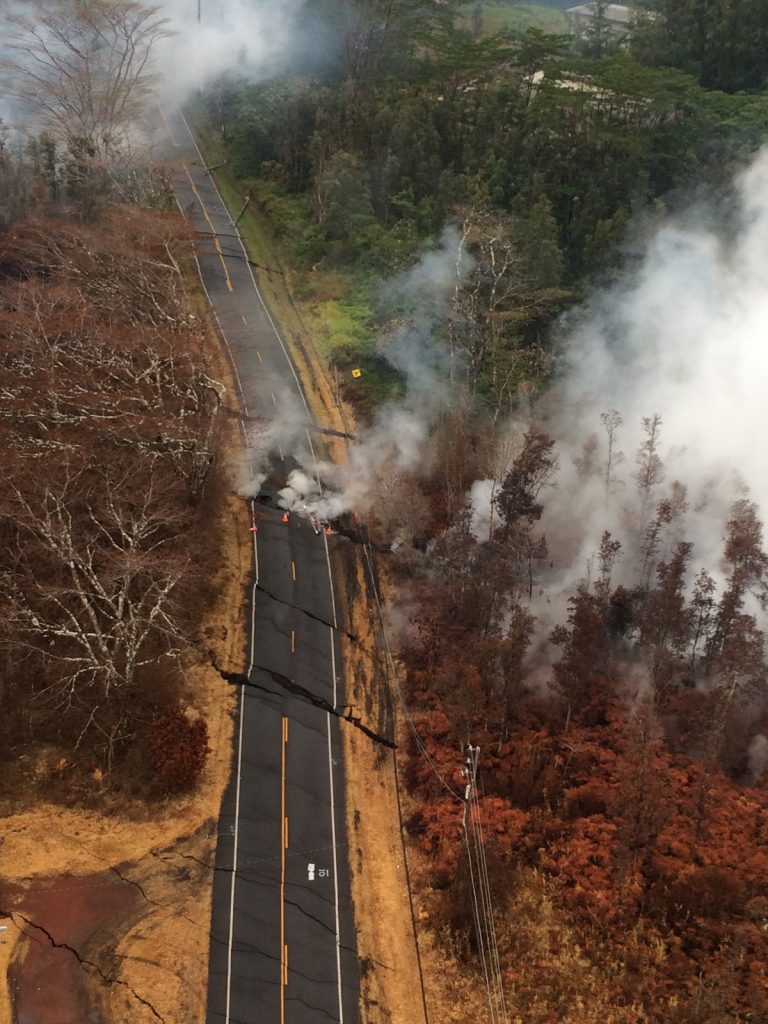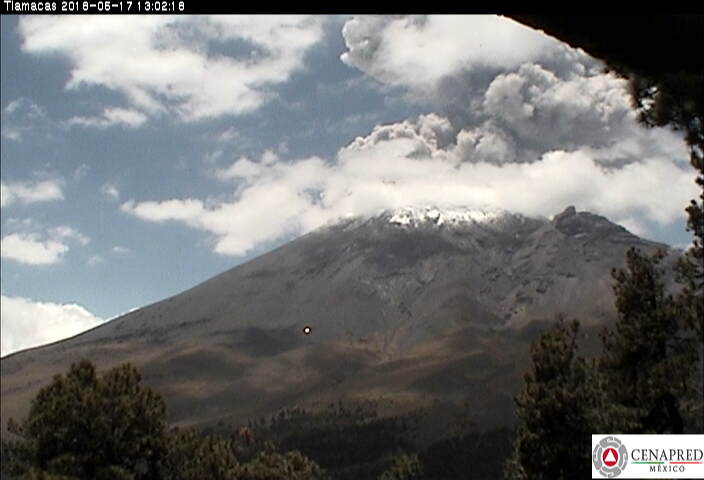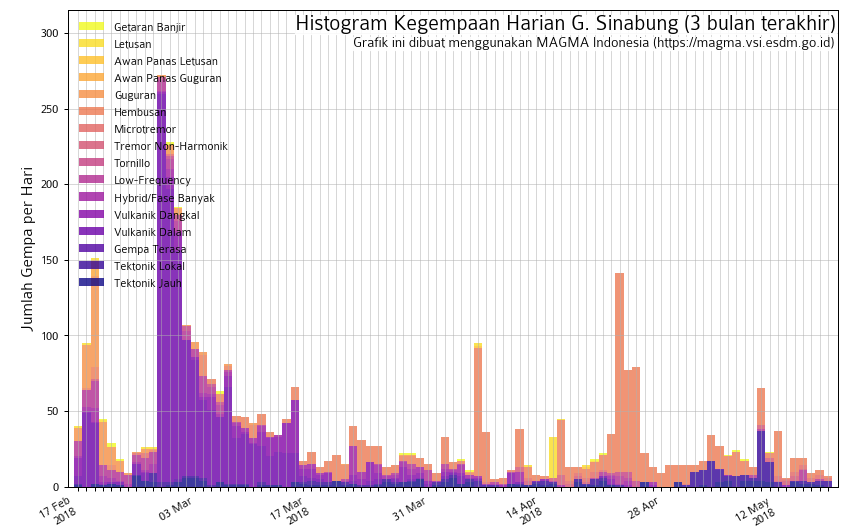Kīlauea Volcano Summit, UPDATE, 5/17/18, 4:54pm HST
After the explosive eruption early May 17, 2018, seismic levels have been gradually increasing, but no additional explosions have occurred.
No earthquakes greater than magnitude 3.5 have occurred in the past day, but volcanic gas emissions at the summit remain high.
Kīlauea Lower East Rift Zone, UPDATE, 5/17/18, 4:54pm HST
Yesterday afternoon, fissure 17 was still actively spattering but the flow had nearly stalled. In addition, fissures 18, 19, and 20 have reactivated and two new fissures (21 and 22)have opened between fissures 7 and 3 and between fissures 19 and 20, respectively.
An area 50-100 yards wide, parallel to and north of the line of fissures between Highway 130 and Lanipuna Gardens, has dropped slightly. This long depression is currently being filled by pahoehoe lava flows from fissures 20 and 21.

The cracks in the road on the bottom of Nohea (Malama side) continue to widen today. There is one portion where the crack is 4 1/2 feet wide! These have grown significantly since yesterday. Also the road is now sagging almost 2 feet as you can see in one of the pictures. The sobering part of these images is that lava isn’t the only thing wreaking havoc in Leilani estates right now. The expansion and contraction of the ground has been immense all through the subdivision. Here some pictures.

Volcanic gas emissions remain elevated throughout the area downwind of the fissures.

Magma continues to be supplied to the lower East Rift Zone as indicated by the continued northwest displacement of a GPS monitoring station.
Popocatepetl volcano erupts in Mexico
Two explosions occurred on May 17, 2018 at 12:50pm and 2:08pm, sending ash more than 2km in the air.
In the last 24 hours, 168 exhalations with emissions of steam and gas have been registered coming out of Popo. A volcanotectonic earthquake of M1.6 was recorded at 4:12pm. At night, bright incandescence and some exhalations gas were also recorded. A constant emission of water vapor and gas is visible, dispersing in southern direction.

The alert level remains at Yellow. CENAPRED emphasizes that people SHOULD NOT go near the volcano, especially near the crater, due to the possibility of ballistic fragments. In case of heavy rains there is a high danger of landslides and debris flows.
Sinabung volcano update

At Sinabung, a white to gray degassing is observed rising at a height of 700 meters above the summit and its seismicity was characterized by 3 explosion earthquakes, tremor of constant amplitude, a low frequency earthquake and some tectonic earthquakes.

Is Sinabung volcano the next one to blow?
No comments:
Post a Comment